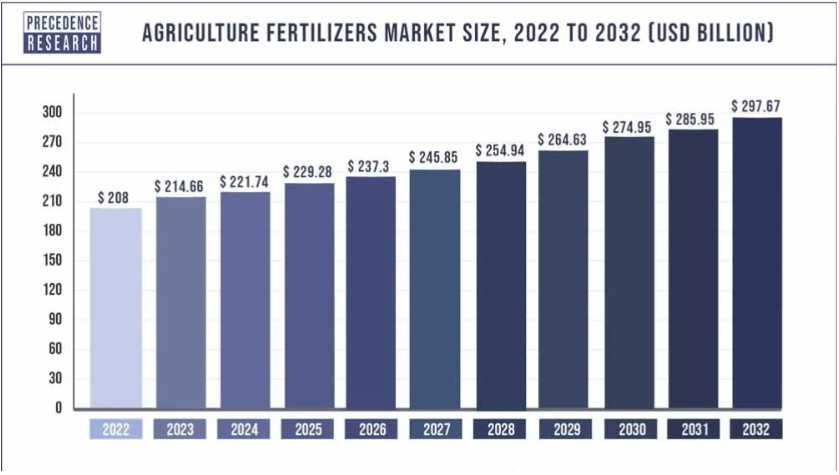
Exhibition time: 17-19 March, 2026 Shanghai, China
 中文
中文

Exhibition time: 17-19 March, 2026 Shanghai, China
 中文
中文

Projections from Persistent Market Research unveil a growing appetite for phosphate fertilizers, with the market expected to surge from US$54.6 billion in 2023 to US$78.4 billion by 2030, marking a compound annual growth rate (CAGR) of 5.3%. These fertilizers, including varieties such as diammonium phosphate (DAP), monoammonium phosphate (MAP), and triple superphosphate (TSP), play a pivotal role in food production and plant growth, their demand driven by an ever-expanding global populace and the ensuing necessity for heightened food production.
Phosphate Fertilizers: A Double-Edged Sword
While phosphate fertilizers have proven indispensable in tackling soil nutrient deficiencies and boosting agricultural productivity, their production is not without challenges. Predominant among these are environmental sustainability, availability of resources, and nutrient management, issues that the industry must grapple with as it strides toward the future.
The Changing Landscape of Fertilizer Consumption
Several factors are shaping the trajectory of the phosphate fertilizers market. The demand for high-efficiency fertilizers, geopolitical instability affecting resource concentration, the rise of organic and bio-based alternatives, precision agriculture, sustainability concerns, regulatory changes, and technological innovations are all playing their parts. In addition, market consolidation through mergers and acquisitions is contributing to the changing landscape. These trends highlight the urgent need for the market to adapt and innovate, ensuring food security and fostering sustainable agricultural practices.
The Role of Sustainable Rice Platform (SRP)
The Sustainable Rice Platform (SRP) is a global alliance committed to transforming the global rice sector. Their focus lies in improving smallholder livelihoods, reducing the environmental, social, and climate footprint of rice production, and providing sustainably produced rice to cater for burgeoning global demand. SRP’s mission is to catalyze global rice sector transformation by promoting on-the-ground adoption of sustainable best practices, thereby linking farmers to markets.
Embracing a Hybrid Approach to Agriculture
There is an emerging trend of using a hybrid approach that combines agricultural system modelling, machine learning, and life cycle assessment to optimize fertilizer application, irrigation, and residue management. This approach, applied in a study on wheat and maize in the North China Plain, found that optimal fertilizer application and irrigation rates are lower than current practices, leading to reduced greenhouse gas emissions. This signifies the potential of spatiotemporal co-optimization of multiple management practices in agriculture.
The Imperative of Climate-Smart Agriculture
Sub-Saharan Africa, particularly Malawi, South Africa, Tanzania, and Zambia, underscores the need for climate-smart agriculture and nutrition security. This involves diversifying agricultural production towards more micronutrient-rich foods to ensure an adequate population-level nutrient supply by mid-century. The challenges of achieving these transformations are immense but so are the risks of relying increasingly on imports. This emphasizes the importance of an integrated assessment framework for climate smart nutrition security and the role of stakeholder-driven scenarios in informing policy decisions.
Source from: BNN Correspondents